If you want to enjoy a big splash of early spring color, then you need to be planting bulbs this fall! By putting in a little work in late autumn, you can be rewarded with a rainbow of colors that can bring amazing life to your landscape after a long, cold winter!
Spring bulbs are one of the first signs of life as winter begins to slowly melt away. It’s always exciting to see the first green sprouts of a tulip, crocus and other spring blooming bulbs shoot through the ground. And it only gets better when they grow to unfurl their beautiful, big blooms.
But to get those early shoots and blooms – spring blooming bulbs need to go in before winter arrives. By planting your flower bulbs in the fall, you are giving them a long period of cool temperatures, which the bulbs need in order to bloom. Then, once the warmth of spring arrives, the flowers can really take off and flourish!
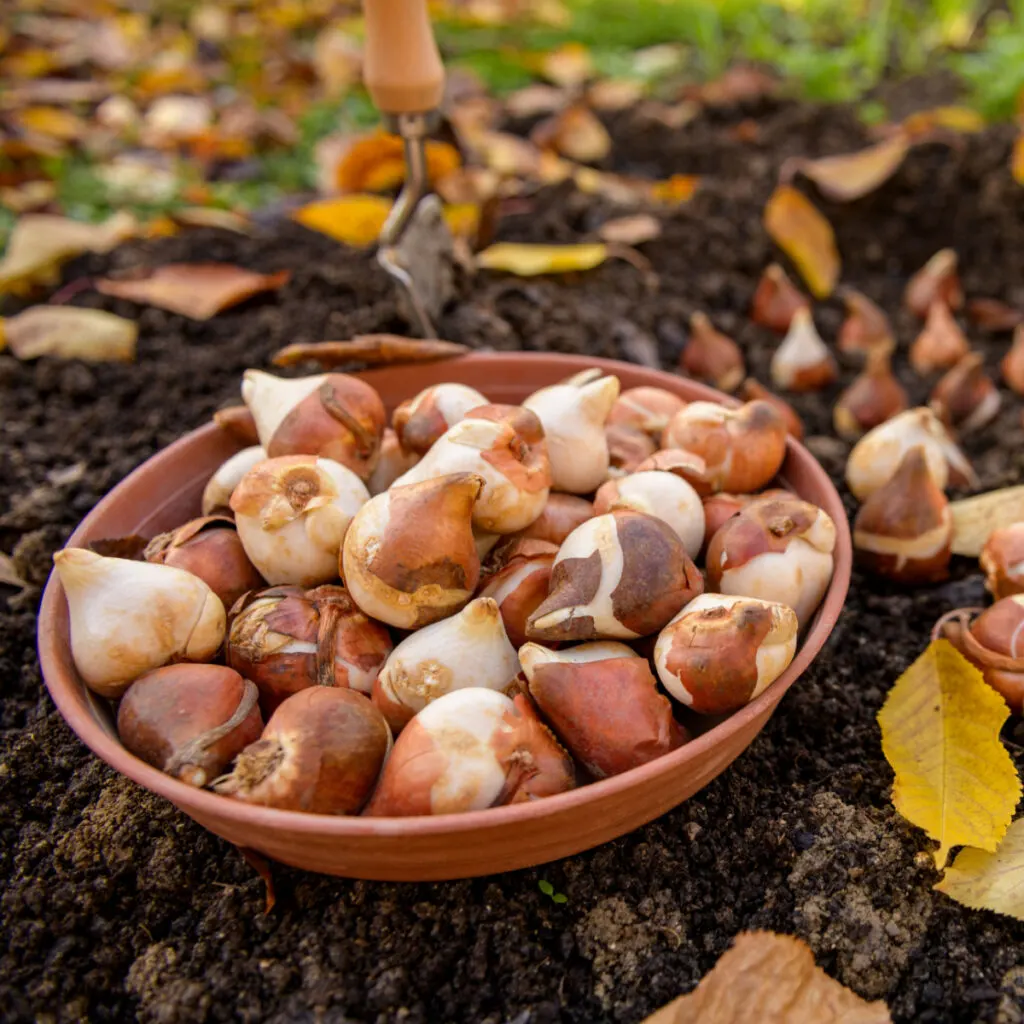
The good news is that with so many different varieties and colors of spring-blooming bulbs available, the sky is the limit for adding endless early season interest to your flowerbeds. With that in mind, here are four of the best of the best for fall planting, along with a few tips and pointers on how to plant your bulbs for blooming success!
The Best Bulbs For Planting In The Fall!
Tulips
Probably the most well-known bulbs of all to plant in the fall are tulips. But beyond the iconic red tulips that have long been popular, you can also find gorgeous tulips in yellow, orange, pink, green, white, and even blooms that flower in multiple colors!
Tulip’s cup-shaped blooms typically feature three petals, but other bloom shapes and styles are available as well. Consider varieties like Double Late Tulips which produce show stopping peony-like blooms as a great contrast to more traditional tulip blooms. (Affiliate Product Link: Double Late Tulip Bulbs)
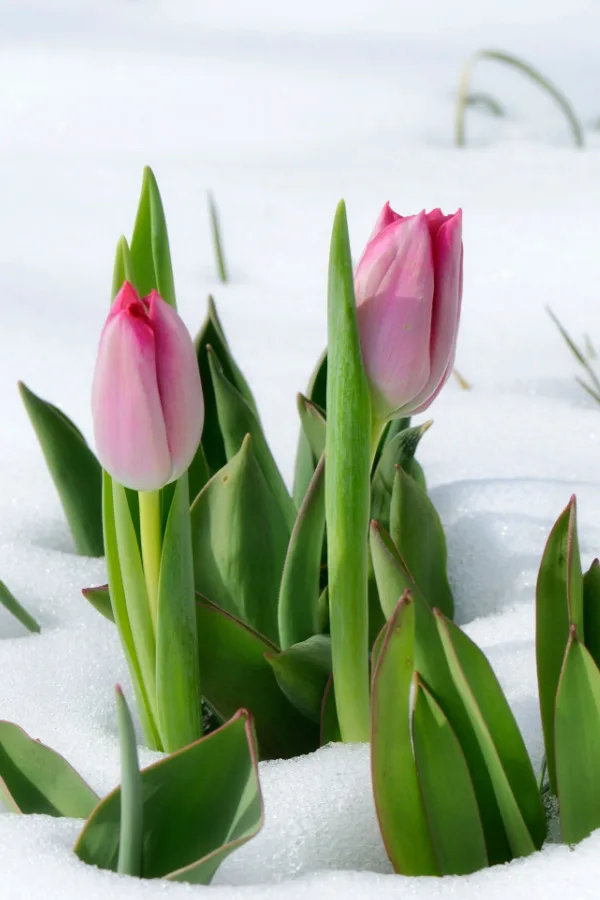
Tulips range in height from 6 inches all the way up to two feet tall. Each bulb planted will result in a single bloom with a set of broad, sturdy leaves.
These spring-blooming flowers start to emerge from the ground in late winter or early spring. Thankfully, you don’t have to worry if new growth occurs early on and then a cold snap arrives. Tulips can handle colder temperatures and even light snow.
Crocus Bulbs – The Best Bulbs For Planting In The Fall
One of the very first types of flower bulbs to sprout after winter is crocus. These petite flowers are grown from croms, which are similar to bulbs in how they are handled and planted.
Crocus is one of the more hardy spring-blooming flowers that can withstand cold temperatures and conditions. In fact, they can even be found popping out of the snow covered ground – a welcoming site indeed!
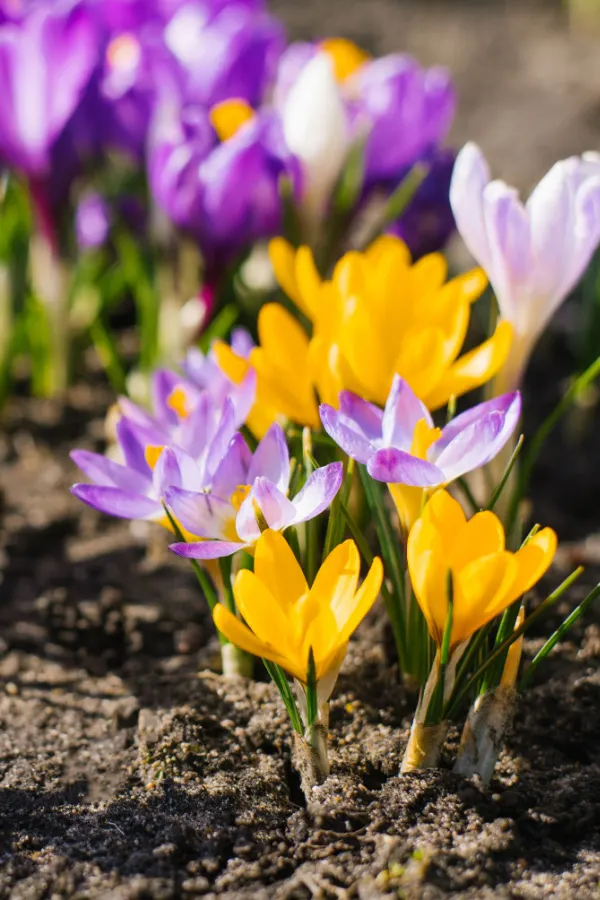
Crocus flowers don’t grow very tall, only reaching heights of around 3 to 6 inches. However, their blooms come in eye-catching colors like purple, blue, pink, red, white, orange, and yellow.
You can often find crocus bulbs in a variety pack, allowing you to grow different colors in hues that work together. Pair these shorter flowers with other taller varieties on this list for a really unique blooming display. (Affiliate Product Link: Blue Moon Mix)
Daffodil – The Best Bulbs For Planting In The Fall
Another popular flower to plant in the fall from bulbs are daffodils. These cold-hardy perennials are able to withstand frigid temperatures as well as a few snowfalls.
In addition, unlike some flowers on this list, daffodil bulbs are deer and rodent-resistant. (See “How To Keep Your Fall Bulbs Safe From Squirrels, Mice & Other Rodents”)
Traditional daffodil flowers feature trumpet-shaped centers with six surrounding petals. The blooms are available in white, yellow, orange, or a mix of these colors. Plants grow between 6 to 30 inches tall, depending on the variety.
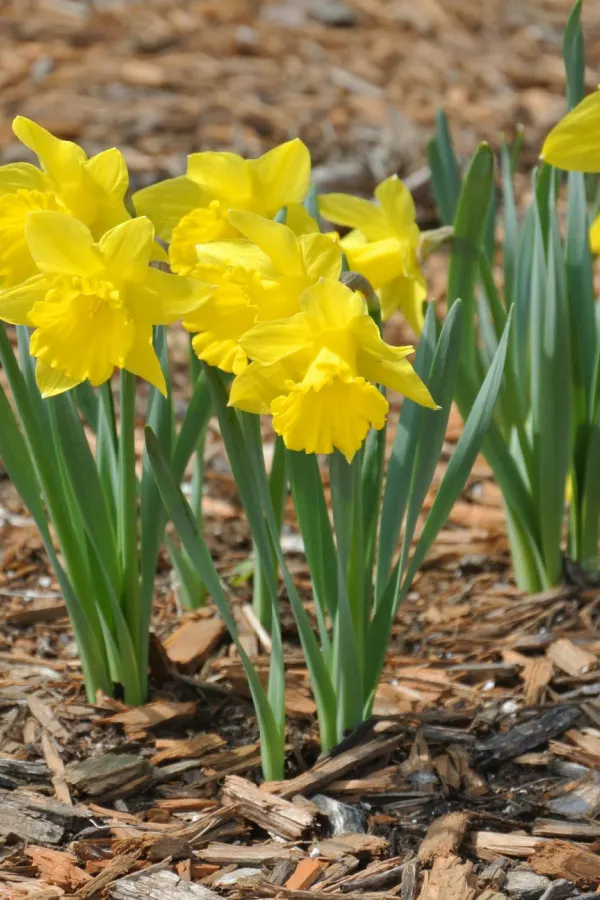
Depending on the variety of daffodils you plant, you can enjoy their blooms from early, mid, to even late in the growing season. Plant some of all three varieties for continual blooms for months on end.
Allium
Last but not least is allium. As a member of the onion family, allium bulbs aren’t as well known as some varieties of bulbs planted in the fall. However, they are still a great addition for interesting color. And, thanks to their onion-like smell, they are also highly deer and animal resistant.
Allium features large, round blooms on top of thin stems. These showy blooms come in colors of purple, blue, pink, red, white, and yellow and are perfect for attracting birds and pollinators early in the spring season.
A great bonus of allium is that they are considered perennials. Since they are winter hardy, they can be left in the ground to come back year after year. (See: Planting Allium In The Fall)
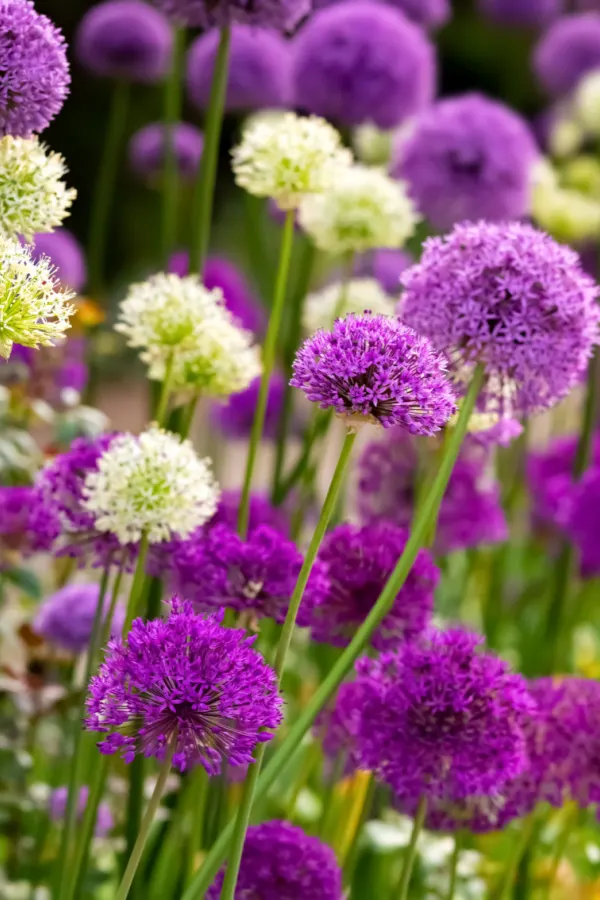
Some allium varieties like Gladiator Allium can grow up to a massive 4 feet tall while others only reach around 6 inches tall. You want to keep their mature height in mind when you go to plant your allium bulbs in the fall since the taller varieties can become easily damaged by wind. (Affiliate Product Link – Gladiator Allium Bulbs)
A Few Secrets To Planting Fall Bulbs…
The key to having success with getting stunning spring blooms is to get your timing just right for planting. Fall bulbs need to be in the ground a few weeks before the ground freezes in your area.
For locations in warmer climates, you can delay planting until the middle of November and even through December. But for colder northern locations, you need to get bulbs in the ground typically around late September through the middle of October.
The soil should be around 50 to 60º Fahrenheit before planting. Any warmer and you chance the bulbs sprouting prematurely and becoming damaged from winter. Planting too late will shorten the amount of cold temperatures the bulbs are exposed to and may delay blooming in the spring.
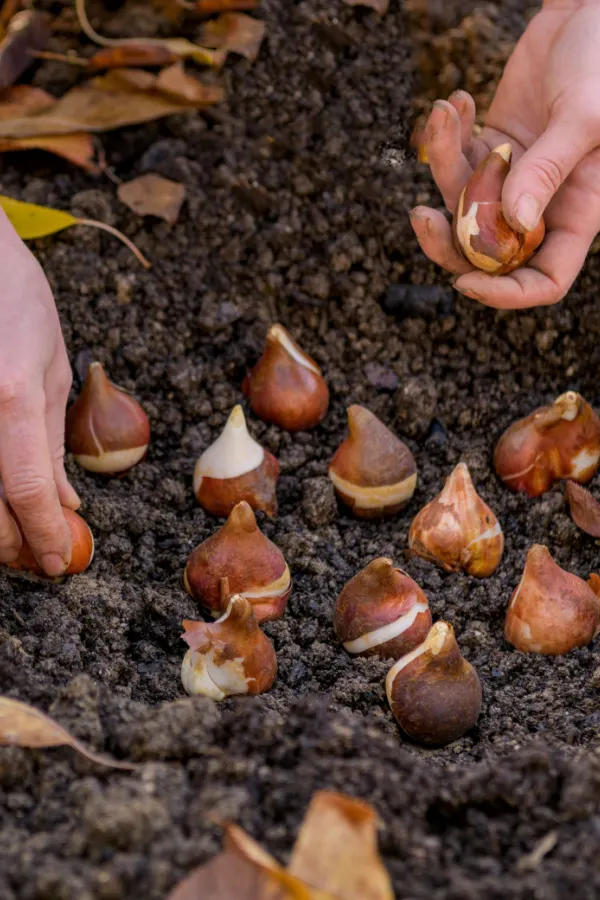
Most bulbs require full sun and well-draining soil in order to bloom and thrive. Keep this fact in mind since some trees may be missing their leaves in the fall when you go to plant.
Creating A Planting Hole For Fall Bulbs
To plant the bulbs, create a hole that is about 2 to 3 times the width of the bulb. Add a couple of inches of compost into the hole and then add your bulb. Make sure the pointy end is facing toward the sky. Backfill with soil and cover with 1 to 2 inches of mulch. It’s as simple as that! Once spring rolls around, there are some steps you can take to keep your bulbs safe – see: How To Keep Squirrels & Chipmunks From Digging Up Your Plants This Spring!
Here is to adding big spring color by planting bulbs this fall!
Follow Our Facebook Page For Even More Great Tips! Simple Garden Life Facebook Page
Simple Garden Life is a website dedicated to keeping gardening fun, simple and enjoyable! We publish two new articles each week along with a new garden podcast episode every two weeks. This article may contain affiliate links.
